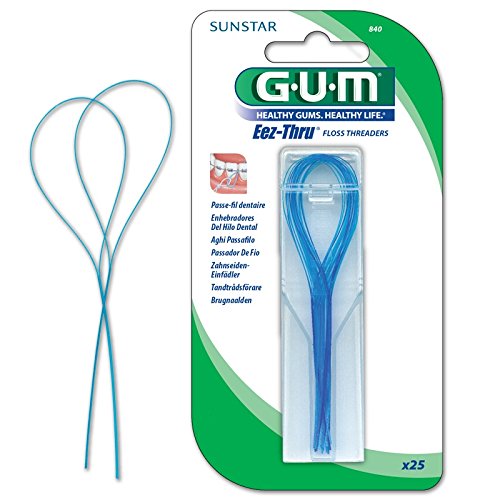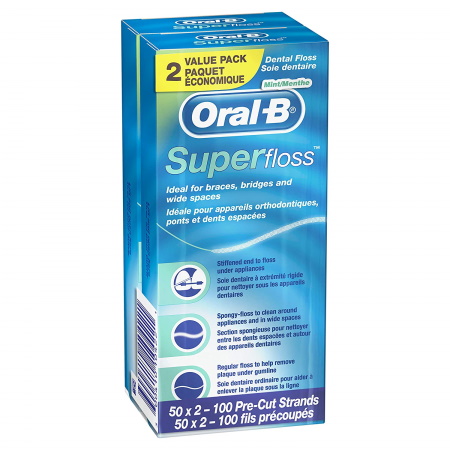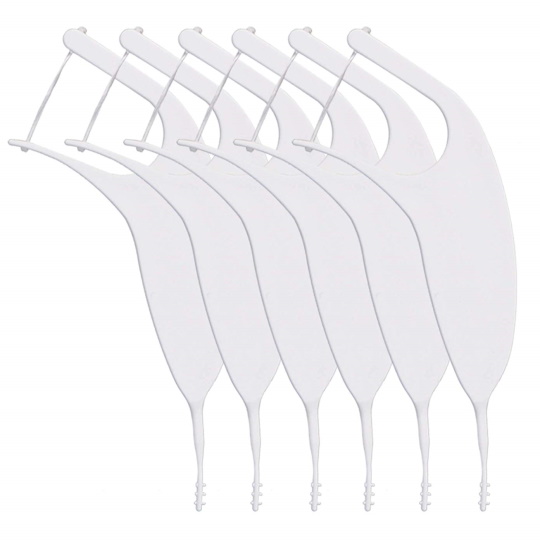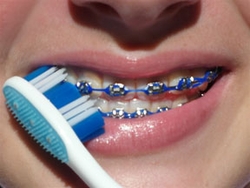How To Use Dental Floss Youtube .,,,,You’ve been religious about flossing for years, and the dentist has complimented your teeth and smile on numerous occasions. How can you be sure that you’re succeeding?
In reality, the vast majority of people have no idea how to properly utilize dental floss. They could be harming their teeth by doing it incorrectly, despite their best intentions. If you want to make sure your flossing skills are top-notch,
Dental floss is easy to use, making it an invaluable tool for many people. But not all dental flosses are the same, as well as how you should use dental floss. If flossing seems too hard to follow, don’t worry any longer, and get familiar with the tips in this article. Read on to learn more on dental floss sticks/how to floss teeth without floss.

How To Use Dental Floss Youtube
- THE PROPER FLOSSING TECHNIQUE
- USING A FLOSSER
- USING AN ELECTRIC FLOSSER
- FLOSSING AROUND DENTAL WORK
- BE GENTLE
Gum disease begins at the gum line and between teeth. Daily flossing is an important part of your oral health care routine to help remove the plaque from these areas where a toothbrush doesn’t completely reach. But to truly reap the benefits, you need to use proper flossing technique.
The Proper Flossing Technique
You’re flossing. Great. But in order for dental floss to effectively remove plaque from your teeth, you need to be sure you’re using the correct technique.
Because you’ll be putting your fingers into your mouth, be sure to wash your hands before you reach for the floss. The American Dental Hygienists’ Association explains the key elements of proper flossing technique in four simple steps:
- Wind: Wind 18 inches of floss around either the middle finger or the index finger of one hand, whichever you prefer, and a small amount onto the middle or index finger of the other hand. (Using the middle finger leaves your index finger free to manipulate the floss.) That sounds like a lot, but you want enough to keep a clean segment in place as you move from tooth to tooth. Pinch floss between thumbs and index fingers, leaving a one- to two-inch length in between. Use thumbs to direct floss between upper teeth.
- Guide: Keep a one- to two-inch length of floss taut between fingers. Use index fingers to guide floss between contacts of the lower teeth.
- Glide: Gently guide floss between the teeth by using a zig-zag motion. Be careful not to let the floss snap or “pop” between teeth. Contour floss around the side of the tooth, making a C shape with the floss as you wrap it around the tooth.
- Slide: Slide floss up and down against the tooth surface and under the gum line, and don’t forget to floss the back side of each tooth. As you move from one tooth to the next, unroll a fresh section of floss from the finger of one hand while rolling the used floss onto the finger of the other hand. Use your thumb as a guide.
This technique applies to any type of floss: waxed, unwaxed, spongy floss or dental tape. As long as you use the correct technique, the type of floss you use is a matter of personal preference. There are many types to choose from, and you can even choose a variety of types to meet your needs and those of your family members.
It doesn’t matter whether you start with your upper or lower teeth, or whether you start in the front or the back. Just make sure that you floss all your teeth, including the back side of the very last tooth on the left, right, top and bottom of your mouth. And don’t forget to floss under the gum line and along the sides of teeth that border any spaces where teeth are missing—food particles can become trapped in these spaces, too. Using the correct technique will help you remove the excess food particles and plaque buildup between your teeth and help improve your oral health. Pair flossing with twice daily brushing as well—an electric toothbrush like the Oral-B iO can help remove more plaque from your gum line and in-between teeth as the round brush head and micro-vibrating bristles surround each tooth for a more thorough clean.
Using a Flosser
If you use a hand-held flosser, the flossing technique is similar. Hold the flosser handle firmly and point the flossing tip at an angle facing the area you want to floss first (either top teeth or bottom teeth). Guide the floss gently between two teeth, and be sure to avoid snapping or popping the floss. Use the same zig-zag motion that you would use with standard floss. Bend the floss around each tooth and slide it under the gum line and along each tooth surface.
Using an Electric Flosser
The same basic flossing techniques apply if you choose an electric flosser. Guide the floss gently into place and move the flosser back and forth to create a zig-zag motion with the floss. Do you have trouble reaching the back sides of the back teeth? Some flossers have angled handles that make it easier to reach those tricky spots.
Flossing Around Dental Work
If you wear braces or other dental appliances, proper flossing technique is especially important to avoid getting floss caught on wires or brackets. You can use special orthodontic floss, which has a stiff end that can be easily threaded under the main wire (also called the arch wire) on your braces. Or you can purchase a floss threader, which is a flexible device with a pick on one end and a loop on the other. To use a floss threader, place an 18-inch piece of the floss of your choice through the loop. Then insert the pointed end of the flosser under the main wire and pull through so the floss is under the main wire. Once you have the floss in place, follow the same principles of proper flossing technique that you would use with standard floss.
Being Gentle
Poor flossing technique can result in complications, and it’s important to be thorough yet gentle, especially when flossing with an electric flosser. Be sure you understand how to use it. You can always ask your dental professional to show you if you are uncertain.
Dental Floss Sticks
How to Floss With Braces
Ask anyone what the hardest part about braces is, and they’ll usually give you the same answer: flossing.
One study shows that only 30% of Americans floss their teeth when they don’t have braces…
…so you can bet that it’s even less when someone has another obstacle, like braces on their teeth to get around.
Why is Flossing With Braces So Important?
According to the American Dental Association, “Cleaning between teeth removes plaque that can lead to cavities or gum disease from the areas where a toothbrush can’t reach.”
In other words, flossing removes plaque and helps prevent cavities and gum disease.
If someone has braces, the risk for plaque buildup, cavities, and gum disease increases dramatically. If you invested in braces to make your teeth straight then shouldn’t you want them to remain clean and healthy in the process?
That’s why we want to show you the easiest, most effective ways to floss your teeth with braces.
How to Floss With Braces Using a Floss Threader
Before you pick up some regular floss, you need to know that it doesn’t work quite the same way if you have braces…
An extra tool is required in order to get the floss beneath the archwire. This tool is called a floss threader.

The best way to picture a floss threader is to first imagine a needle and thread. The floss threader will act as the needle, and your floss will be the thread.
First, pass a piece of floss through the floss threader…
…and then using the floss threader, “thread” the floss beneath the wire.
Once you have the floss beneath the wire, you can floss as you normally would.
After you have flossed one tooth you will need to repeat this process for each tooth.
The Pros of Using a Floss Threader to Floss With Braces:
- Very Inexpensive – Your orthodontist will likely give you a pack for free (or you can pick some up for a few dollars on Amazon or at a drug store)
- Reusable – One pack will likely last you months or years
- A Process You’re Already Used To – No special tools are needed, just the threader and floss.
The Cons of using a Floss Threader to Floss With Braces
- Tricky To Use At First – This is especially true for younger kids. Using the floss threader requires some hand skills that may prove difficult for young children.
- Takes Longer Than Normal Flossing – . Because you have to repeat the process of flossing beneath the wire for every tooth in your mouth, this can be a time consuming process.
Check out our video about brushing and flossing with braces! It demonstrates exactly how floss threaders are used.
Overall, using a floss threader to floss with braces works well and many patients choose this option for its cost-effectiveness. But if you’d like to find a faster or easier option, keep reading below…
How to Floss With Braces Using Superfloss
Superfloss is essentially a piece of floss with one stiff end.

Superfloss works similarly to a floss threader, only you don’t need to do the “needle and thread” process. You simply take the stiff end of floss, guide it beneath your archwire, and floss your teeth.
The Pros of Using a Superfloss to Floss With Braces:
- Easier Than a Floss Threader – Most kids and adults figure this method out pretty easily.
- Easy To Find – It can be purchased on Amazon or at your local drug store
The Cons of using a Superfloss to Floss With Braces
- Also Time Consuming – Because you have to repeat the process of guiding the floss beneath the wire, it does take a little bit of time.
- Not Reusable – Super floss is a one-time use product, so each day you will use a new piece and throw it away. This product isn’t too expensive, but while you are in braces you will likely need several boxes to get you by.
Superfloss is a great tool that cleans well. Grab a pack next time you’re at the drug store and try it out for yourself!
How to Floss With Braces Using a Platypus Orthodontic Flosser
Platypus Orthodontic Flossers are one of the quickest, and EASIEST ways to floss with braces.

There is no threading required with the platypus orthodontic flossers. The narrow side of the flosser is designed to fit behind the arch wire, allowing you to floss your entire mouth in no more than two minutes (usually less)!
The easiest way to understand how the Platypus Orthodontic Flosser works is to see it in action. Click below to watch a video about how to floss with braces using the Platypus Orthodontic Flosser.
The Pros of Using a Platypus Orthodontic Flosser to Floss With Braces:
- Fastest Method – You can floss your entire mouth in two minutes or less.
- No Threading Required – This makes it easier for young kids who may struggle with the floss threaders on their own.
The Cons of Using a Platypus Orthodontic Flosser to Floss With Braces
- Cost More Than Floss Threaders – The Platypus Orthodontic flossers are a one-time use product, so each day you will use a new flosser and throw it away. This product is still reasonably priced, however, and you can buy them in larger packages to save money.
- Difficult To Find In-Store – This is most likely a solution you will need to order online. You can find them on Amazon with free shipping and in multiple package sizes.
The Harp Orthodontic Flosser is very similar to the platypus flosser – it too allows you to floss without threading. You simply guide the small end of the flosser beneath the archwire to floss your entire mouth; no threading required!

How To Floss Teeth Without Floss
The Pros of Using a Harp Orthodontic Flosser to Floss With Braces:
- Quick And Easy – You can floss your entire mouth in two minutes or less.
- No Threading Required – This makes it easier for young kids who may struggle with the floss threaders on their own.
- Reusable For Up To A Week – , This means less total flossers you will have to buy throughout the time you have braces.
The Cons of Using a Harp Orthodontic Flosser to Floss With Braces
- Cost More Than Floss Threaders – Harp Flossers cost more than floss threaders, but they are still very reasonable. To get a month’s supply of Harp flossers it comes out to about $5!
- Difficult To Find – They can’t be found at local drug stores or on Amazon, but you can order them direct on the Harp company website.
How to Floss With Braces Using a Waterpik or Water Flosser
A Waterpik is a popular brand of water flosser. A water flosser is a device that delivers a stream of pressurized pulsating water between your teeth, along the gum line, and around your braces. If you find that string floss, no matter the type, is too difficult to do on a daily basis, then a water flosser might be a good choice for you!
In addition to cleaning between your teeth like floss, a water flosser can also help remove food debris along the gum and around the braces. Watch the video below to see how a water flosser can help you floss with braces and keep your braces clean.
The Pros of Using a Waterpik or Water Flosser to Floss With Braces:
- No String Required – If you or your child struggles with string floss, a water flosser is likely the best answer. It’s quick, easy and lets you floss your entire mouth in two minutes or less.
- Helps Around The Braces And Gum Line – String floss just can’t get to these areas.
- Easy To Find – You can pick Waterpiks or water flossers up at your local drug store or online.
- One-Time Investment – One unit will last the entire time you’re in braces—plus a long time after that! This is also the most eco-friendly choice, as it allow you to entirely eliminate trash waste from your flossing routine.
The Cons of Using a Waterpik or Water Flosser to Floss With Braces
- Most Expensive – Portable units start around $30, and counter top units may cost up to $70. But remember, you never have to replace it while you’re wearing braces.
- Not Portable – A water flosser does require you to be near a sink in order to use it.
No matter which type of floss you choose . . . there’s no doubt that flossing with braces is crucial to maintaining healthy teeth, healthy gums, and avoiding bad breath with braces.
With the tools listed above, you’ll find it easier and less time consuming than ever to floss with braces.

It’s important to keep your braces and teeth properly clean. Otherwise, you may end up with gum disease and decalcification of your teeth! Cleaning teeth in braces isn’t hard; it just takes time and patience. When you first get your braces on, brushing and flossing will probably take 10 to 20 minutes. As you get used to your braces and time passes, you’ll get faster at it.
Flossing with braces hurts
The first few days after you get your braces, your teeth and gums may be very sensitive. It may be extremely difficult to brush and floss properly because of this sensitivity. Just do your best. You may need to take a break from flossing for a few days until the initial pain and sensitivity subside.
How often should you brush your teeth? Ideally, after every meal and snack. Of course, that may not be realistic. Just brush as often as you can. In between, swish water in your mouth or just rinse and spit a few times. Make sure that you floss at least once a day.